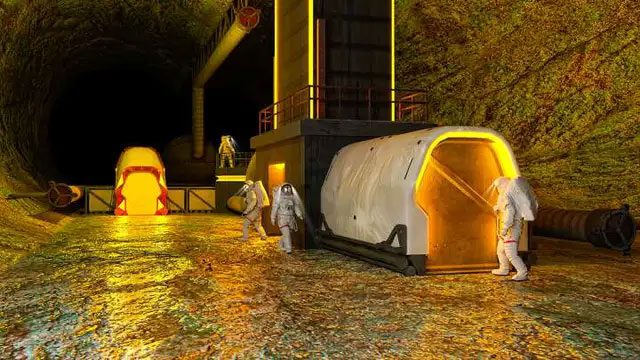Scientists are actively seeking ways to preserve the current achievements of humanity in order to counter the risk of human extinction at any moment.
A Doomsday Vault has been constructed on Spitsbergen Island in Norway to store copies of various seed types in sealed aluminum bags. This vault aims to protect plant varieties for the world’s food supply from loss due to disasters such as war or natural calamities.
However, this system is not perfect – the vault has previously been flooded due to climate change – but the idea behind it is being adopted by a company to protect humanity’s knowledge, rather than just seeds. The company, named Lonestar, plans to store human data in volcanic lava tubes on the Moon.

We need to take our assets to places where we can keep them safe.
Christopher Stott, CEO of Lonestar, stated: “It is unimaginable that we are keeping our most valuable assets, our knowledge and data, right here on Earth, where we are still bombing and destroying everything. We need to take our assets off this planet, to places where we can keep them safe.“
Not only is this a wild idea, but in April, the company announced that they had signed contracts for the first two missions to place data centers on the Moon.
In fact, there is already a similar Doomsday Vault for open-source data located in Svalbard.
Lonestar has secured a spot on the IM-1 mission of Intuitive Machines, a private company that is set to land a spacecraft on the Moon to conduct a software test with a small amount of data stored on the lander. They then plan to “deliver the first full-service data payload to IM-2 of Intuitive Machines to the Moon’s poles“, where they will perform upload and download tests.
Lonestar’s idea is that future servers can communicate with Earth and store information that we do not want to lose for many years to come.

Storing data on the Moon has never been a simple task.
“If we don’t do this, what will happen to our data on Earth?” Stott said. “The seed bank has been flooded due to the effects of climate change. It is also vulnerable to other forms of destruction such as war or cyberattacks. We need a place where data can be stored safely.“
This is not the first time scientists have proposed the idea of storing important knowledge from Earth on the Moon. However, storing data on the Moon has never been an easy task.
The temperature fluctuations on the Moon are extreme. During the day, it can reach up to 106 degrees Celsius, but at night it can drop to -183 degrees Celsius, and the Moon’s surface lacks the protective atmosphere that Earth has against solar radiation. Therefore, Lonestar proposes building data storage servers in the Moon’s volcanic lava tubes, where temperatures are more stable and can shield the servers from destructive radiation.
In addition to Lonestar, the Italian Space Agency has also commissioned Thales Alenia Space to build data centers on the Moon as part of NASA’s Artemis Moon program. This program will lead to permanent settlement on the Moon, making data centers a necessity rather than a whimsical idea.


















































